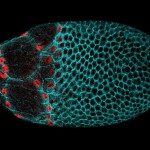Link to Pubmed [PMID] – 22143790
Proc. Natl. Acad. Sci. U.S.A. 2011 Dec;108(51):20609-14
Regeneration of appendages is frequent among invertebrates as well as some vertebrates. However, in mammals this has been largely relegated to digit tip regeneration, as found in mice and humans. The regenerated structures are formed from a mound of undifferentiated cells called a blastema, found just below the site of amputation. The blastema ultimately gives rise to all of the tissues in the regenerate, excluding the epidermis, and has classically been thought of as a homogenous pool of pluripotent stem cells derived by dedifferentiation of stump tissue, although this has never been directly tested in the context of mammalian digit tip regeneration. Successful digit tip regeneration requires that the level of amputation be within the nail bed and depends on expression of Msx1. Because Msx1 is strongly expressed in the nail bed mesenchyme, it has been proposed that the Msx1-expressing cells represent a pluripotent cell population for the regenerating digit. In this report, we show that Msx1 is dynamically expressed during digit tip regeneration, and it does not mark a pluripotent stem cell population. Moreover, we show that both the ectoderm and mesoderm contain fate-restricted progenitor populations that work in concert to regenerate their own lineages within the digit tip, supporting the hypothesis that the blastema is a heterogeneous pool of progenitor cells.
